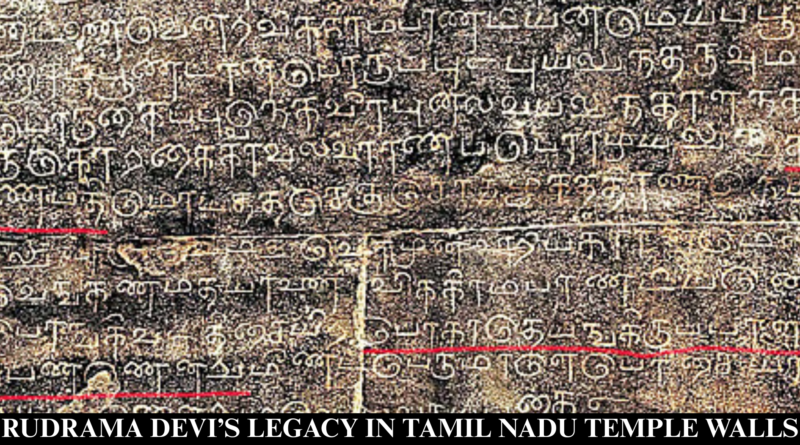RUDRAMA DEVI’S LEGACY ECHOES IN TAMIL NADU TEMPLE WALLS
In a historic revelation that has surprised scholars and history lovers alike, an ancient inscription found in the sacred Chidambaram Nataraja Temple has brought Queen Rudrama Devi back into the spotlight. The discovery highlights her widespread influence, proving that her legacy extended far beyond the borders of her kingdom in present-day Telangana.
Rudrama Devi, the iconic Kakatiya queen who ruled in the 13th century, was one of the very few female rulers in Indian history to ascend the throne in a time dominated by male monarchs. Her administration was marked by intelligence, bravery, and an effort to preserve her kingdom’s unity against external threats. The inscription in Tamil Nadu suggests that her fame was not just limited to the Telugu-speaking regions.
The Chidambaram inscription reportedly praises Rudrama Devi for her just rule and her contributions to temple welfare. This is significant, as it reveals a cultural and political connection between the Kakatiya kingdom and the Tamil region, which was under the influence of different dynasties like the Cholas and Pandyas at the time. Such inscriptions are rare and offer vital clues about inter-regional respect among South Indian rulers.
Historians are especially intrigued because this inscription lies deep within one of Tamil Nadu’s most sacred temples, dedicated to Lord Shiva in his cosmic dancing form. The Nataraja Temple has been a center of spiritual, artistic, and political importance for centuries. The inclusion of Rudrama Devi’s name here speaks volumes about the alliances or mutual respect that may have existed between kingdoms.
Experts believe that this inscription may date back to the time when Rudrama Devi was recognized as a sovereign by southern rulers or religious institutions. It may even be possible that she contributed to temple activities, either through direct donation or symbolic patronage. These records would have been preserved out of deep respect for her leadership.
For the people of Telangana, this finding is a moment of pride. It reaffirms the stature of Rudrama Devi as a regional power whose name resonated across linguistic and political boundaries. For Tamil Nadu, it adds another layer of richness to its already vibrant temple history and highlights the shared culture of South India.
This discovery also opens the door for further exploration. If inscriptions honoring Rudrama Devi exist in Chidambaram, it’s likely there are more such records waiting to be uncovered in other parts of southern India. Historians and archaeologists are now keen to investigate more temple walls and palm-leaf records from that period.
In conclusion, the Chidambaram inscription is more than just a piece of ancient writing it is a symbol of cross-cultural admiration and respect. It reminds us how rulers like Rudrama Devi left their mark not only through war and governance but also through cultural connections that withstood the test of time.





Great